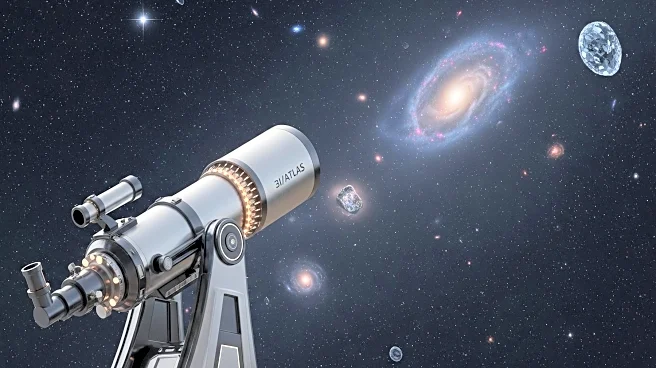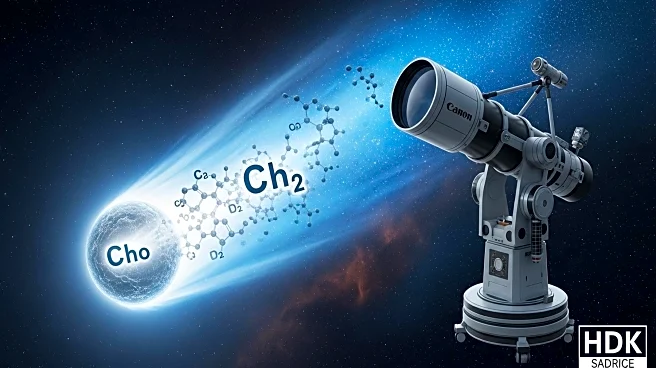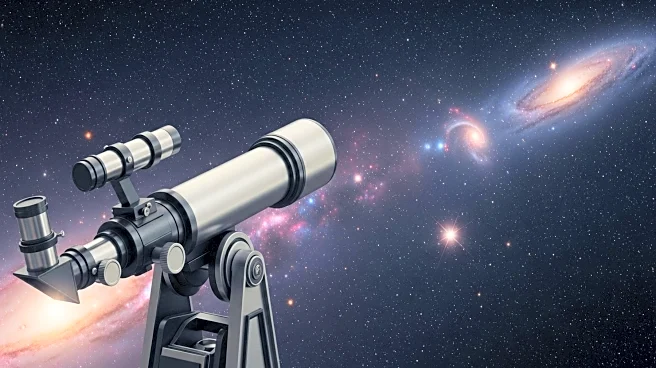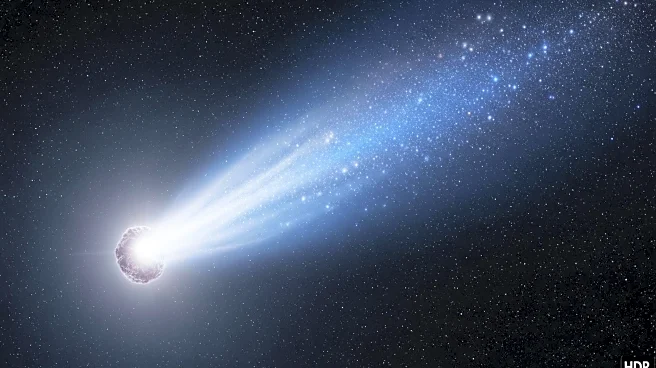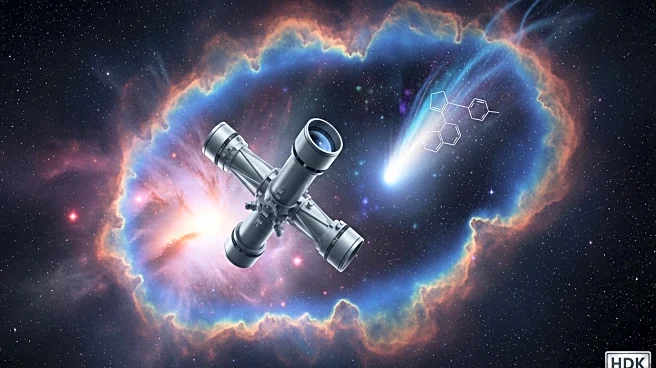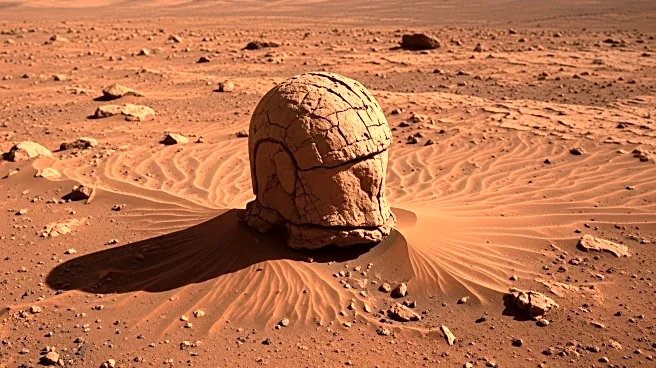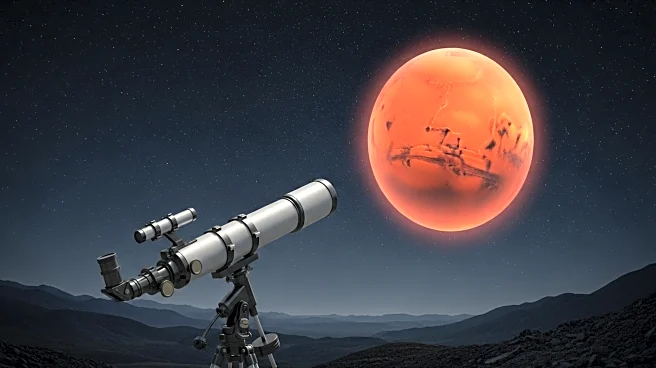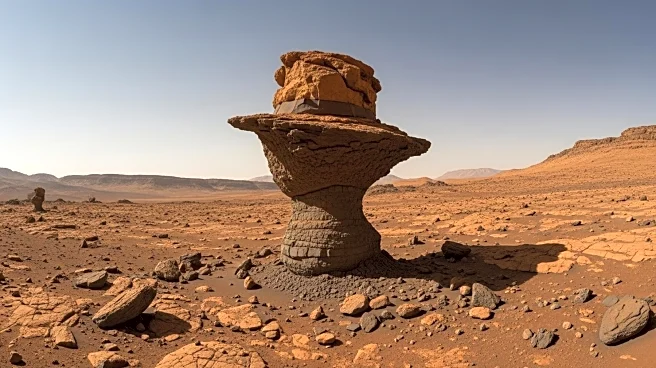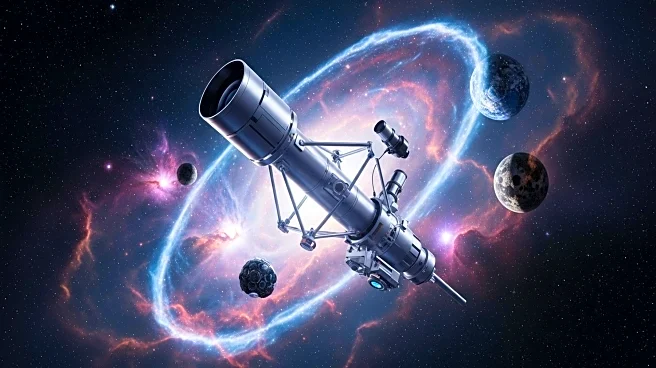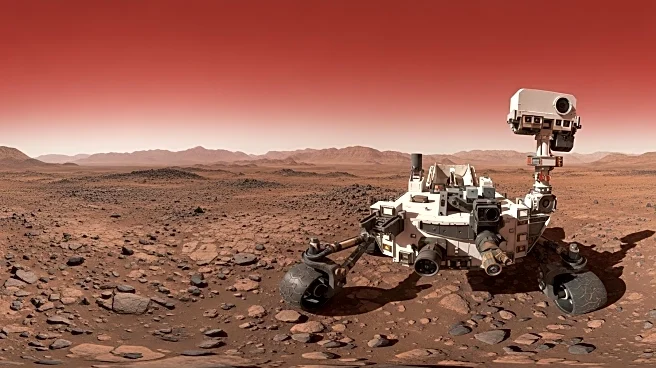What's Happening?
The Hubble Space Telescope has captured the best image yet of the interstellar object 3I/ATLAS, revealing significant uncertainties about its solid-density nucleus. The SPHEREx space observatory detected a flux suggesting a large nucleus or an opaque dust cloud with a diameter of 46 kilometers. The image's limited resolution does not provide a robust constraint on the sunlight reflected by the nucleus compared to the surrounding dust cloud. Theoretical models are highly dependent on the data, leaving the size of 3I/ATLAS uncertain. The mass of the nucleus, if solid, is estimated to be about 10^20 grams, significantly larger than previous interstellar comets.
Why It's Important?
Understanding the mass and size of 3I/ATLAS is crucial for comprehending the nature of interstellar objects. The findings could challenge existing models of interstellar object behavior and composition, potentially impacting theories about the formation and evolution of such objects. The study of 3I/ATLAS may provide insights into the materials present in interstellar space and contribute to the broader understanding of cosmic phenomena.
What's Next?
Future observations and measurements are expected to refine the understanding of 3I/ATLAS's mass and size. NASA may use the Juno spacecraft to measure gravitational effects as 3I/ATLAS passes near Mars and Jupiter, providing more precise data. Continued monitoring and analysis will help resolve existing uncertainties and improve theoretical models.
Beyond the Headlines
The study of 3I/ATLAS raises questions about the presence of technological artifacts in space, as its proximity to Mars could allow for the release of probes. This possibility highlights the need for continued exploration and monitoring of interstellar objects.
